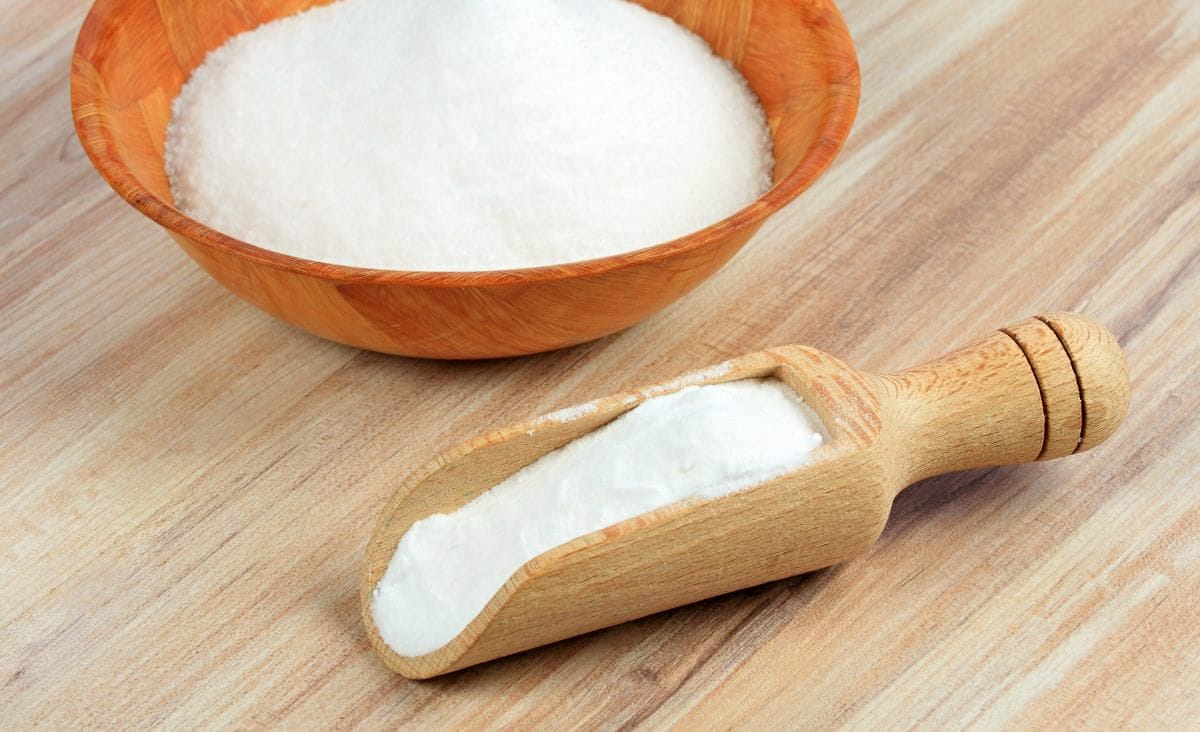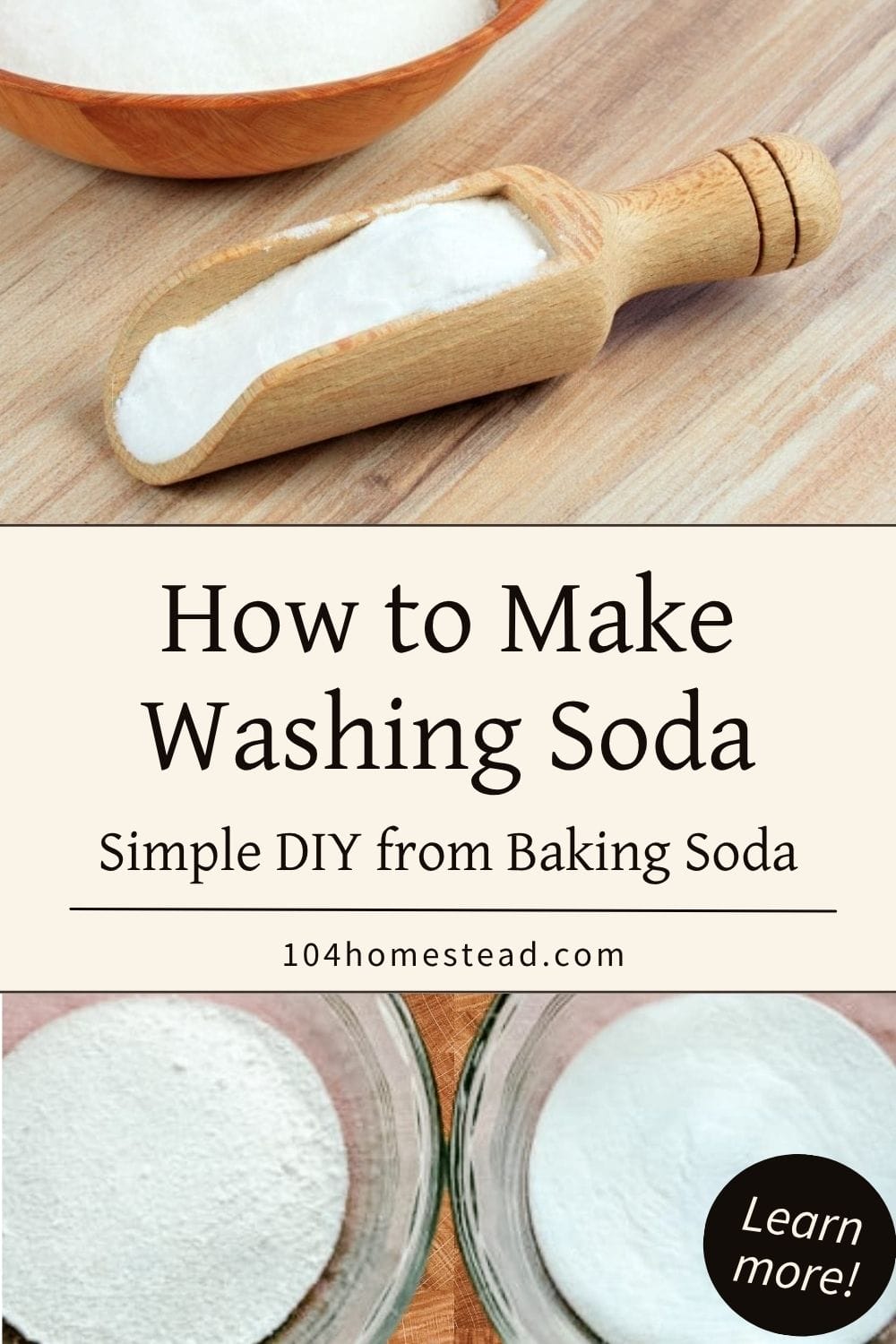How to Make Washing Soda at Home (from Baking Soda)
Turn plain baking soda into washing soda with this easy oven method. Save money, skip the store hunt, and boost your natural cleaning routine.

It never fails. You’re all geared up to make your monthly batch of homemade cleaners, and bam, you’re out of washing soda. That’s exactly what happened to me. I thought, no problem, I’ll just swing by Wal-Mart. But the shelf was empty. The next week? Still empty. And then a store clerk told me they wouldn’t be carrying it anymore—but “they have plenty of baking soda.” As if that’s the same thing.
Spoiler alert: it’s not.
After checking every store in the county, I was just about ready to give up. Then someone at the tiny local hardware store mentioned that her nephew had made some for a school project. “It’s just heated-up baking soda,” she said. I was skeptical. But I tried it anyway.
And guess what? It worked.
What’s the Difference Between Baking Soda and Washing Soda?
This part matters. Baking soda and washing soda aren’t interchangeable, but they’re closely related.
Baking soda (sodium bicarbonate) becomes washing soda (sodium carbonate) when it’s heated to the right temperature. When you heat baking soda long enough, it basically sheds some stuff (like water and carbon dioxide) and turns into a stronger, more alkaline cleaner. It’s not magic, it’s just good old chemistry doing its thing.
- Baking soda has a pH of around 8 and is great for gentle deodorizing.
- Washing soda has a pH of 11 and is strong enough to cut grease, lift stains, and soften hard water.
If you like learning the science behind simple home ingredients, check out my post on baking soda and natural treatments for powdery mildew. It’s another great example of how versatile this pantry staple can be around the homestead.
Why Make Washing Soda Yourself?
Half the time I can’t even find it locally anymore. And when I do, it’s usually overpriced. Making it myself keeps me from having to rely on online orders or hoping the store restocks.
Baking soda is cheap and everywhere. I can grab a box at the grocery store for a couple bucks, and turning it into washing soda takes no extra money (just oven time).
There’s something satisfying about being able to make your own basic supplies. It’s one more way to simplify, cut plastic waste, and take control of your home environment. If that kind of DIY spirit speaks to you, you’ll love Make Your Own Cleaning Products with Common Household Items. It’s full of easy swaps that use what you already have.
How to Make Washing Soda at Home
If you’ve got baking soda and an oven, you’re halfway there. This process is simple, fast, and saves you a trip to the store.
Step-by-Step Instructions
Here’s exactly how to do it. It doesn’t take much effort, but the details matter if you want it to turn out right.
1. Preheat your oven to 400°F. You need steady, dry heat to make the switch happen.
2. Spread baking soda in a thin layer on a baking sheet. Use a rimmed metal sheet or a glass baking dish—no more than ¼” thick. Thick layers may not convert fully.
3. Bake for 1 hour, stirring occasionally. Use a wooden spoon—rubber will melt (ask me how I know). Stirring ensures even heating.
4. Check for changes. Washing soda looks dull and grainy, unlike baking soda’s soft, fluffy texture. If you’re unsure, compare it side-by-side with unbaked soda.

5. Let it cool completely before storing. Washing soda loves to soak up moisture from the air, so store it in an airtight container.
Safety Notes
Label it clearly! Trust me, you don’t want to confuse it with your flour jar. And don’t breathe in the dust. It’s stronger than baking soda and can make your throat scratchy. Oh, and skip aluminum pans. Washing soda can react with them. Stick with stainless steel or glass, otherwise you might end up with a strange reaction and a ruined pan.
How to Tell If It Worked
Still not sure if you got it right?
- Visual test: Washing soda is gritty, not powdery.
- Feel test: It should feel dry and a bit like fine sand.
- pH test: If you’re curious, dissolve some in water and test with a pH strip. Washing soda will read around pH 11. Baking soda will read closer to 8.
Storage Tips & Shelf Life
Once your washing soda cools down, here’s how to keep it fresh and ready to use.
- Let your washing soda cool completely before storing.
- Keep it in an airtight container in a cool, dry place like a pantry or cupboard.
- Label it clearly, and avoid storing it near food.
It’ll keep pretty much forever if it stays dry. If it clumps or looks off, it’s probably sucked up some moisture and started to turn back into baking soda.
What Is Washing Soda Used For?
Also known as soda ash or sodium carbonate, washing soda is a natural, heavy-duty cleaner. It’s best known for laundry use but has lots of other applications.
I mostly use mine in laundry soap and the occasional batch of homemade dish soap. But it’s handy for all kinds of things: fabric prep, general cleaning, even outdoor scrubbing. If you want to go deeper, Root Simple has a great tutorial on using it for dyeing, and One Good Thing by Jillee shares a ton of creative cleaning ideas.
Ready to take your natural cleaning routine even further? Try my guide to cleaning your stovetop and oven without harsh chemicals or discover the magic of soap nuts for more than just laundry.
Frequently Asked Questions About Making Washing Soda
Before you jump in, here are a few things people often ask:
Want to remember this later? Pin this post to your Natural Cleaning board so you’ll never be stuck without washing soda again.

Honestly, making your own washing soda takes about an hour, and once you do it, you’ll wonder why you ever hunted all over town for a box. It’s one of those simple swaps that makes you feel a little more in control of your home and a little less at the mercy of store shelves. So whether you’re making laundry soap or messing around with a fabric dye project, having washing soda on hand just makes life easier.
Have you tried making your own washing soda? Drop your tips or questions in the comments—I’d love to hear how it went!

How long before it might be finished in the oven? 15min? An hour? Thanks.
It can take anywhere from 30 minutes to an hour.
Great information. Thank you.
I use washing soda to make my laundry soap along with two other ingredients and dishwasher soap too. I had been getting the washing soda from Amazon where 3 months ago I got it for $4.12 and also found it at the store later for around the same price. I went to Amazon a couple of days ago to order it again and they want almost $21.00 for the same amount of product as I got before! The store doesn’t have it and I don’t know when they will have it. I looked online and it’s either not available or the cost is way too much. Then during my online search, I found out I can make it! WoW, am I surprised as to how easy it is and I happen to have a huge bag of baking soda here now. Thank you so much for posting this info, you have saved me looking any further!
Hello Jessica – I’ve been making washing soda for years, but when I read your blog a few years ago, I was elated. I had taught my youngest daughter Chemistry at home using the Dr. Jay Wile text, and we did a lot of chemical computations. Seeing the chemistry info on your article was encouraging because I could read and understand the sentence! Make me feel like a real mad scientist in the kitchen 😉 Thank you!
I will make washing soda according to your tips .thanks for sharing,and keep sharing.
Thank you for sharing! Iam going to do this with my OVEN this week!
Great article! I didn’t realize washing soda was so easy to make. Much more expensive to buy, so I’ll be making my own from now on!
I’m so glad to help Esther!
Marty Agree’s!! I also subscribed…..Thank you…Martini
Thanks , I have just been looking for info about this subject for ages and
yours is the greatest I’ve discovered till now.
However, what concerning the bottom line? Are you certain concerning the supply?
I am genuinely thankful to the owner of this web site who has
shared this wonderful article at at this place.
I don’t even understand how I ended up right here, but I assumed this publish used to be good.
I do not know who you’re however certainly you’re going to a famous blogger in case you are not already.
Cheers!